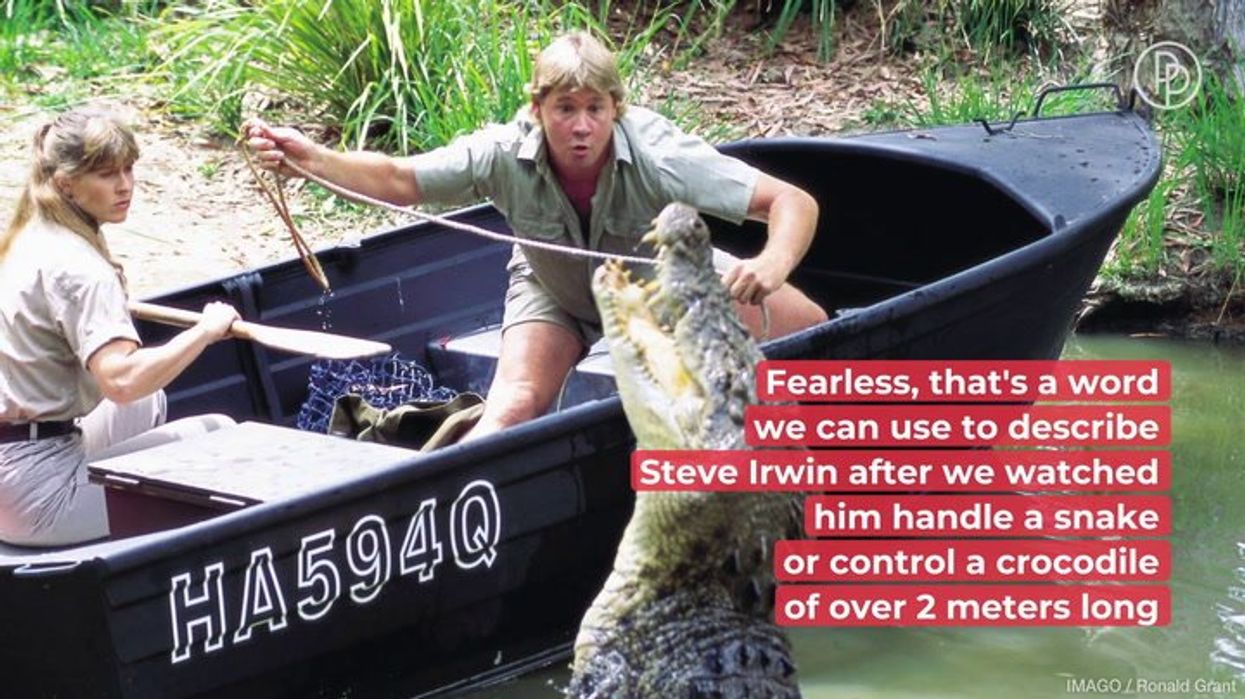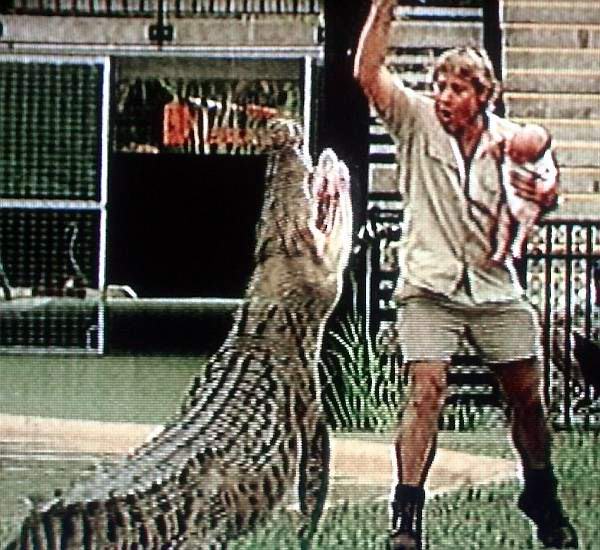Steve Irwin Stingray Accident: The Tragic Day That Shocked The World
On September 4, 2006, the world lost a true wildlife warrior when Steve Irwin, the Crocodile Hunter, tragically passed away due to a freak stingray accident. This unexpected event sent shockwaves through the global community, leaving millions of fans heartbroken. The incident happened while filming an underwater documentary off the coast of Queensland, Australia, and it remains one of the most unforgettable moments in wildlife history.
Steve Irwin wasn’t just a TV personality; he was a symbol of conservation, education, and passion for nature. His untimely death brought attention not only to the dangers faced by wildlife experts but also to the delicate balance between humans and marine life. This story isn’t just about a tragic accident—it’s about legacy, impact, and the lessons we can learn from this unforgettable event.
As we dive deeper into the details of the Steve Irwin stingray accident, we’ll explore what happened that fateful day, the circumstances surrounding the tragedy, and how it changed perceptions about marine safety. But first, let’s take a moment to remember the man behind the legend and why his work mattered so much to so many people.
Read also:Masafuncom Your Ultimate Travel Companion For Seamless Adventures
Biography of Steve Irwin: The Man Who Loved Wildlife
Before we delve into the specifics of the stingray accident, it’s important to understand who Steve Irwin was. Born on February 22, 1962, in Essendon, Victoria, Australia, Steve grew up surrounded by animals. His parents, Bob and Lyn Irwin, were passionate about wildlife conservation, and they instilled that love in their son from a young age. Steve’s early years were spent exploring the great outdoors, and by the time he was a teenager, he was already helping his father catch and relocate problem crocodiles.
Early Life and Career
Steve’s journey with wildlife began in earnest when he moved to Queensland with his family. It was here that he developed a reputation as a skilled crocodile catcher, eventually taking over the management of the Australia Zoo in 1991. The zoo became his platform for sharing his passion with the world, and it wasn’t long before he caught the attention of television producers.
His show, "The Crocodile Hunter," premiered in 1996 and quickly became a global sensation. Steve’s enthusiastic and sometimes chaotic approach to wildlife made him a household name, and his love for animals was infectious. He wasn’t just an entertainer; he was an educator, teaching millions about the importance of conservation and respect for nature.
Biodata of Steve Irwin
| Full Name | Stephen Robert Irwin |
|---|---|
| Birthdate | February 22, 1962 |
| Place of Birth | Essendon, Victoria, Australia |
| Parents | Bob and Lyn Irwin |
| Spouse | Terri Irwin |
| Children | Bindi Sue Irwin, Robert Irwin |
| Occupation | Zookeeper, Wildlife Conservationist, Television Personality |
What Happened on That Fateful Day?
Let’s go back to September 4, 2006, when Steve Irwin was filming a documentary called "Ocean’s Deadliest." The crew was in the waters off the Great Barrier Reef, capturing footage of various marine creatures. The plan was to film a segment featuring stingrays, and Steve was eager to showcase these often misunderstood creatures.
During the shoot, Steve swam close to a stingray to get a better shot. Suddenly, the stingray reacted defensively, thrusting its barbed tail into Steve’s chest. The barb pierced his heart, causing severe internal bleeding. Despite the crew’s best efforts to save him, Steve passed away shortly after the incident.
This tragic event was a stark reminder of the risks involved in working with wildlife. It also highlighted the importance of understanding animal behavior and respecting their natural instincts.
Read also:Wentworth Miller Wife The Untold Story Yoursquove Been Waiting For
Understanding Stingrays: The Misunderstood Creatures
Stingrays are often seen as gentle and harmless creatures, but they are equipped with a powerful defense mechanism. Their tails have barbs that can deliver venom, and they use them when they feel threatened. In Steve’s case, the stingray likely perceived him as a threat and reacted instinctively.
- Stingrays are found in warm waters around the world.
- They are mostly bottom-dwelling creatures and feed on small fish and mollusks.
- While they are generally not aggressive, they can be dangerous if startled or cornered.
It’s important to note that stingray attacks on humans are extremely rare. In fact, most incidents occur when people step on stingrays in shallow waters, causing them to lash out in self-defense.
Steve Irwin’s Legacy Lives On
Even though Steve Irwin is no longer with us, his legacy continues to inspire millions. His wife, Terri Irwin, and their children, Bindi and Robert, have carried on his mission of wildlife conservation. The Australia Zoo remains a hub for education and research, and it continues to promote the values that Steve stood for.
Steve’s death was a wake-up call for many, reminding us of the importance of respecting wildlife and the environment. His passion for animals and his desire to protect them have left an indelible mark on the world.
Conservation Efforts After Steve’s Death
In the years following Steve’s passing, there has been a renewed focus on marine conservation. Organizations around the world have launched initiatives to protect stingrays and other marine species. The Steve Irwin Wildlife Reserve, established in Queensland, is dedicated to preserving native habitats and promoting sustainable practices.
Steve’s death also led to increased awareness about the dangers of interacting with wildlife. While it’s important to appreciate and learn about animals, it’s equally important to do so in a safe and responsible manner.
Lessons Learned from the Stingray Accident
The Steve Irwin stingray accident taught us several valuable lessons about wildlife safety and conservation. Here are some key takeaways:
- Always respect the space and boundaries of wild animals.
- Be aware of your surroundings when swimming or diving in natural habitats.
- Understand the behavior and instincts of the animals you are observing.
- Support conservation efforts to protect endangered species and their habitats.
These lessons are not just for wildlife enthusiasts but for anyone who interacts with nature. By learning from Steve’s experience, we can ensure that future generations have the opportunity to appreciate the beauty and diversity of the natural world.
How the Media Covered the Tragedy
When news of Steve Irwin’s death broke, it dominated headlines around the globe. The media coverage was extensive, with reporters scrambling to gather details about the incident. Some outlets handled the story with sensitivity, while others were criticized for sensationalizing the tragedy.
The Irwin family released a statement expressing their grief and thanking fans for their support. They emphasized that Steve’s passion for wildlife would continue to drive their conservation efforts. The media attention brought renewed focus to the work of the Australia Zoo and the importance of wildlife preservation.
Public Reaction and Tributes
Fans from all over the world paid tribute to Steve in various ways. Thousands visited the Australia Zoo to leave flowers and messages, while others shared their memories of Steve on social media. The outpouring of support was a testament to the impact Steve had on people’s lives.
Tributes also came from fellow wildlife experts and celebrities who admired Steve’s dedication to conservation. His death was a reminder of the risks faced by those who work closely with animals, but it also highlighted the rewards of such a career.
Scientific Insights: Why Stingrays Attack
Scientists have studied the behavior of stingrays extensively in the wake of Steve’s accident. They’ve found that stingrays are generally shy and avoid human contact whenever possible. However, certain factors can trigger defensive reactions:
- Sudden movements that startle the animal.
- Feeling cornered or trapped.
- Misinterpretation of human presence as a threat.
Understanding these triggers can help reduce the likelihood of future incidents. By educating people about stingray behavior, we can promote safer interactions with these fascinating creatures.
Legal and Safety Measures Post-Accident
In the aftermath of Steve’s death, new safety guidelines were implemented for wildlife filmmakers and divers. These measures aim to minimize the risks associated with working in marine environments:
- Maintaining a safe distance from marine animals.
- Using non-invasive filming techniques.
- Training crew members in first aid and emergency response.
These protocols have helped improve safety standards in the industry, ensuring that future projects can be conducted with minimal risk to both humans and animals.
Conclusion: Remembering Steve Irwin’s Legacy
The Steve Irwin stingray accident was a tragic event that shocked the world, but it also served as a powerful reminder of the importance of wildlife conservation. Steve’s passion for animals and his commitment to protecting them have left a lasting legacy that continues to inspire people around the globe.
As we reflect on this incident, let’s honor Steve’s memory by supporting conservation efforts and promoting responsible interactions with wildlife. Whether it’s through donations, volunteering, or simply spreading awareness, we can all play a role in preserving the natural world.
So, take a moment to share this article, leave a comment, or explore more content about wildlife conservation. Together, we can ensure that Steve Irwin’s legacy lives on for generations to come.
Table of Contents
- Biography of Steve Irwin
- What Happened on That Fateful Day?
- Understanding Stingrays
- Steve Irwin’s Legacy
- Lessons Learned
- Media Coverage
- Scientific Insights
- Legal and Safety Measures
- Conclusion


